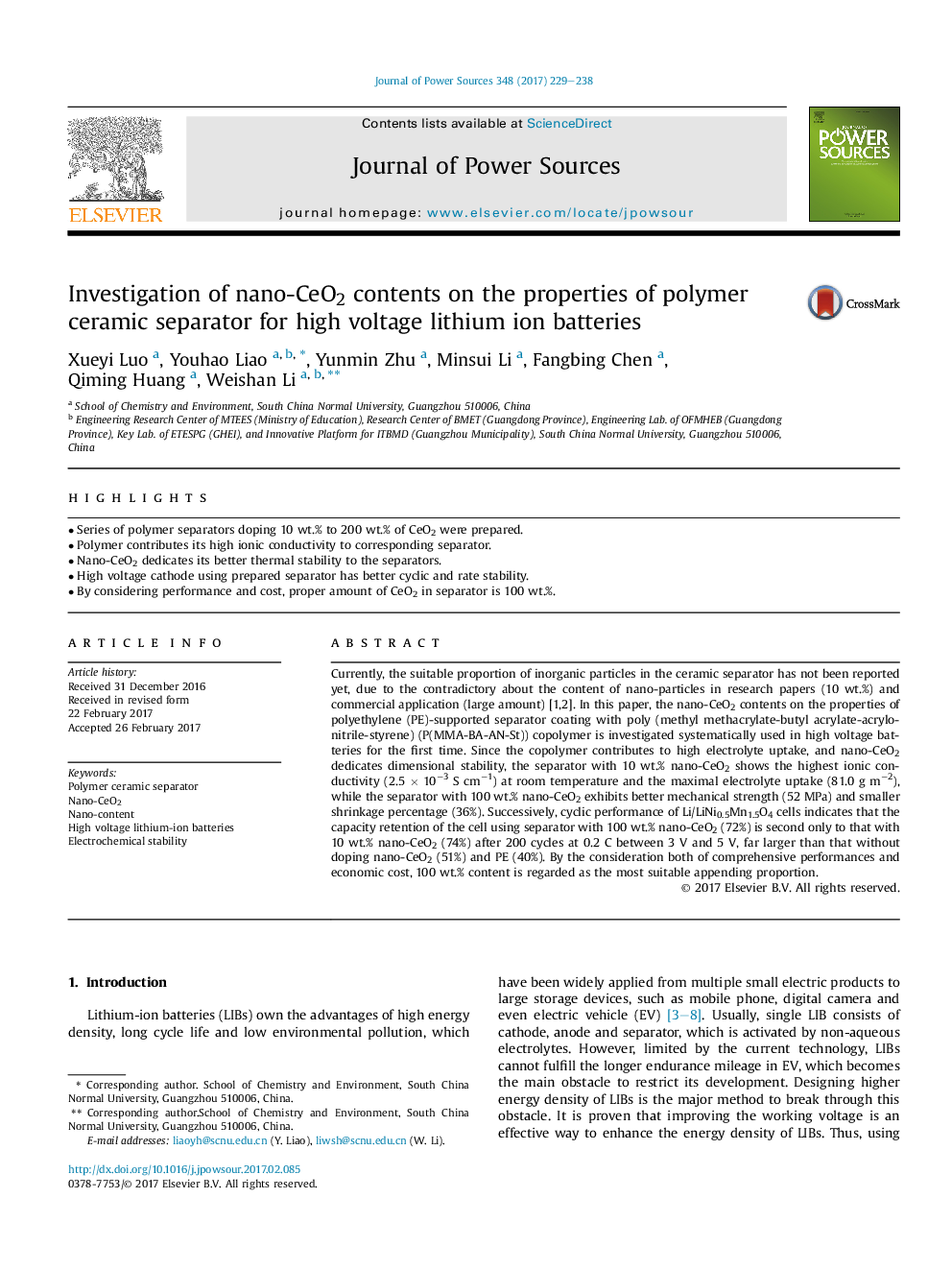| Article ID | Journal | Published Year | Pages | File Type |
|---|---|---|---|---|
| 5149491 | Journal of Power Sources | 2017 | 10 Pages |
Abstract
Currently, the suitable proportion of inorganic particles in the ceramic separator has not been reported yet, due to the contradictory about the content of nano-particles in research papers (10 wt.%) and commercial application (large amount) [1,2]. In this paper, the nano-CeO2 contents on the properties of polyethylene (PE)-supported separator coating with poly (methyl methacrylate-butyl acrylate-acrylonitrile-styrene) (P(MMA-BA-AN-St)) copolymer is investigated systematically used in high voltage batteries for the first time. Since the copolymer contributes to high electrolyte uptake, and nano-CeO2 dedicates dimensional stability, the separator with 10 wt.% nano-CeO2 shows the highest ionic conductivity (2.5 Ã 10â3 S cmâ1) at room temperature and the maximal electrolyte uptake (81.0 g mâ2), while the separator with 100 wt.% nano-CeO2 exhibits better mechanical strength (52 MPa) and smaller shrinkage percentage (36%). Successively, cyclic performance of Li/LiNi0.5Mn1.5O4 cells indicates that the capacity retention of the cell using separator with 100 wt.% nano-CeO2 (72%) is second only to that with 10 wt.% nano-CeO2 (74%) after 200 cycles at 0.2 C between 3 V and 5 V, far larger than that without doping nano-CeO2 (51%) and PE (40%). By the consideration both of comprehensive performances and economic cost, 100 wt.% content is regarded as the most suitable appending proportion.
Keywords
Related Topics
Physical Sciences and Engineering
Chemistry
Electrochemistry
Authors
Xueyi Luo, Youhao Liao, Yunmin Zhu, Minsui Li, Fangbing Chen, Qiming Huang, Weishan Li,
